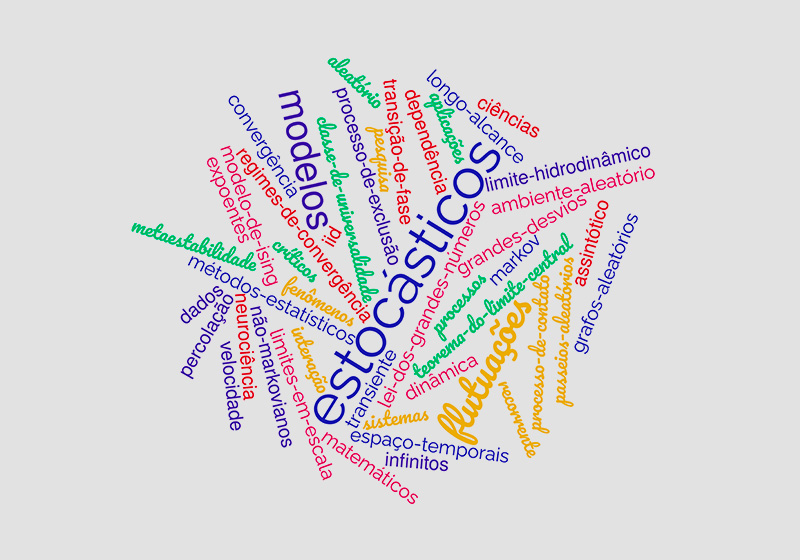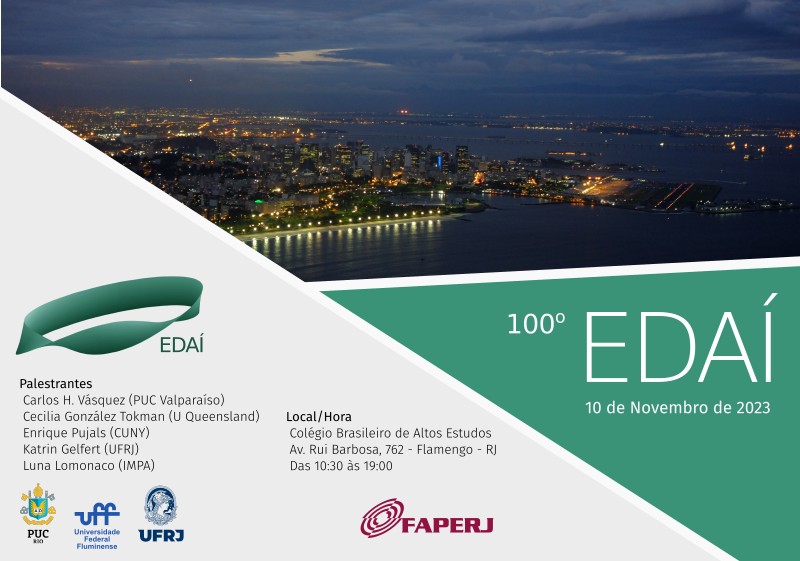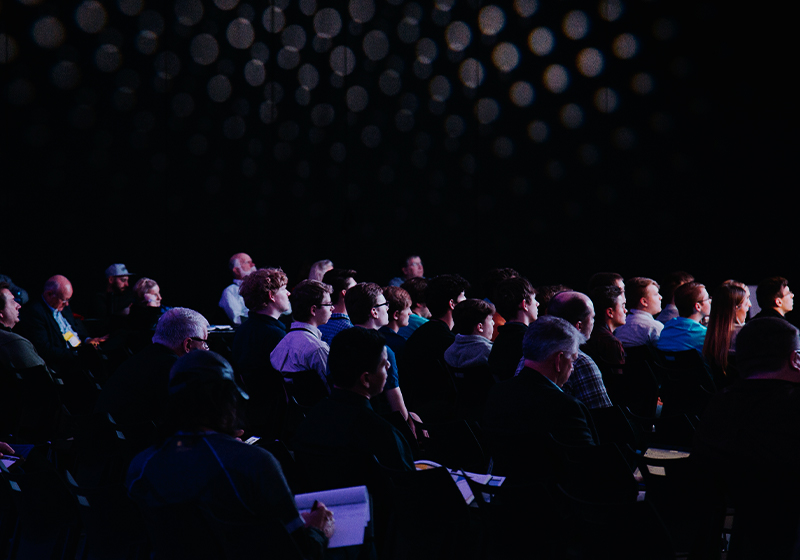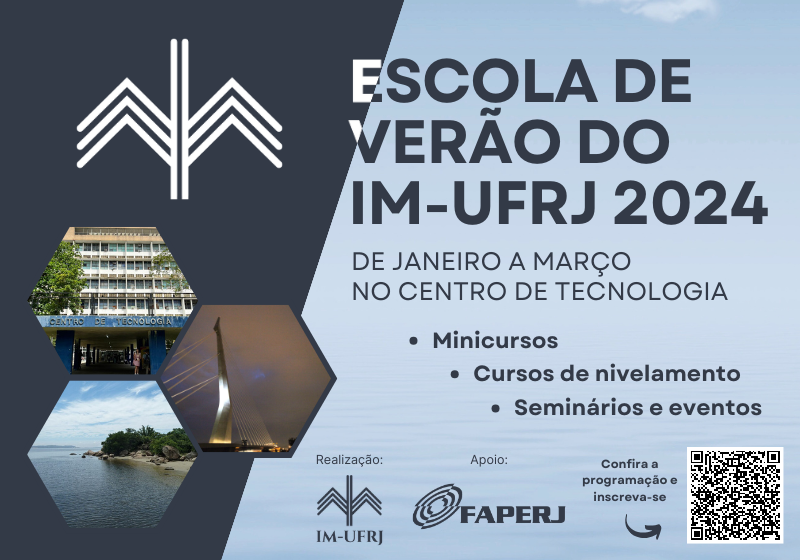 De 4 a 8 de dezembro de 2023 ocorrerá o minicurso The cutoff phenomenon for stochastic Langevin equations, ministrado pelo Professor Michael Högele, da Universidad de Los Andes, Bogotá.
De 4 a 8 de dezembro de 2023 ocorrerá o minicurso The cutoff phenomenon for stochastic Langevin equations, ministrado pelo Professor Michael Högele, da Universidad de Los Andes, Bogotá.
Para saber mais, clique AQUI.
 100º EDAÍ, 10/11 no CBAE em Flamengo
100º EDAÍ, 10/11 no CBAE em Flamengo
Local: Colégio Brasileiro de Altos Estudos, Av. Rui Barbosa, 762 - Flamengo
Data e hora: 10 de novembro de 2023, das 10:30 às 18:30
10h30 – 11h30: Katrin Gelfert (UFRJ)
Ergodic recycling of heterodimensional cycles
We define the concept of heterodimensional cycles between hyperbolic ergodic measures of different indices. We study what impact the existence of such a cycle has on the topological properties of the space of invariant measures and present some examples. This is joint work with L. Díaz and Ch. Bonatti.
11h45 - 12h45: Carlos H. Vásquez (PUC Valparaíso)
Measures of maximal entropy for partially hyperbolic diffeomorphisms.
A central problem in dynamics is being able to determine the existence of measures that capture relevant dynamic information. One of these measures is the one that maximizes entropy. In this talk, we will explore the problem of establishing the existence and uniqueness of this measure in partially hyperbolic systems.
14h30 - 15h30: Luna Lomonaco (IMPA)
The Mandelbrot set and its Satellite copies
For a polynomial on the Riemann sphere, infinity is a (super) attracting fixed point, and the filled Julia set is the set of points with bounded orbit. Consider the quadratic family P_c(z)=z^2+c. The Mandelbrot set M is the set of parameters c such that the filled Julia set of P_c is connected.
Computer experiments quickly reveal the existence of small homeomorphic copies of M inside itself; the existence of such copies was proved by Douady and Hubbard. Each little copy is either primitive (with a cusp on the boundary of its main cardioid region) or a satellite (without a cusp). Lyubich proved that the primitive copies of M satisfy a stronger regularity condition: they are quasiconformally homeomorphic to M. The satellite copies are not quasiconformally homeomorphic to M (as we cannot straighten a cusp quasiconformally), but are they mutually quasiconformally homeomorphic? In joint work with C. Petersen we prove that the answer is negative in general, but positive in the case the satellite copies have rotation number with same denominator (this last part is work in progress).
15h40 - 16h40: Cecilia González Tokman (University of Queensland - UQ)
Lyapunov–Oseledets spectrum for transfer operator cocycles under perturbations
In recent years, the study of transfer operators has been combined with multiplicative ergodic theory to shed light on ergodic-theoretic properties of random dynamical systems. The so-called Lyapunov– Oseledets spectrum associated to the transfer operator cocycle contains fundamental information about invariant measures, exponential decay rates and coherent structures which characterize dominant global transport features of the system. While the scope of this framework is broad, it is challenging to identify and approximate this spectrum. In this talk, we present examples of maps where the Lyapunov– Oseledets spectrum can be understood and analyzed under perturbations. This talk is based on joint work with Anthony Quas.
17h10 – 18h10: Enrique Pujals (City University of New York - CUNY)
From zero to positive entropy
We will discuss the mathematical processes by which a system evolves from one whose recurrent set is finite towards another one exhibiting chaotic behavior as parameters governing the behavior of the system are varied. In that direction, we will present a tentative global framework toward describing a large class of two-dimensional dynamics (that includes the Henon family), inspired partially by the developments in the one-dimensional theory of interval maps. More precisely, we present a class of intermediate smooth dynamics between one and higher dimensions where it is possible to describe the transition from zero to positive entropy.
 Local do evento: Instituto de Física da UFF - sala 201 Av. Gal. Milton Tavares de Souza, s/no. Campus da Praia Vermelha. Niterói, RJ, Brasil
Local do evento: Instituto de Física da UFF - sala 201 Av. Gal. Milton Tavares de Souza, s/no. Campus da Praia Vermelha. Niterói, RJ, Brasil
Nosso próximo encontro do COLMEA será no dia 25 de outubro (quarta-feira) no IF-UFF. Na ocasião teremos a seguinte programação:
14:00h - Alexis Hernández Nuñez (IF - UFRJ) - "Modelling how social network algorithms can influence opinion polarization"
15:40h - Taiane Coelho Ramos (IC - UFF) - "O que é neurociência computacional?"
Todos são muito bem-vindos.
Mais informações sobre o COLMEA podem ser encontradas AQUI.
Resumo: Modelling how social network algorithms can influence opinion polarization - Alexis Hernández Nuñez (IF - UFRJ)
The study of opinion dynamics in online social networks has garnered considerable attention in recent years. Numerous researchers have proposed models to simulate the communication process that mediates these dynamics. Such models consider users and their friendship relations as nodes and edges in a network, where the communication process takes place. Here, we present a model that considers not only the dynamic resulting from individuals’ behaviors but also the influence of the social network algorithm. The proposed model simulates communication in an online social network, in which randomly created posts represent external information. Users and friendship relations are encoded as nodes and edges of a network. The dynamic of information diffusion is divided into two processes, referred to as "post transmission" and "post distribution", representing the users’ behavior and the social network algorithm, respectively. Individuals also interact with the post content by slightly adjusting their own opinions and sometimes redefining friendships. Our results show that the dynamic converges to various scenarios, which go from consensus formation to polarization. Importantly, friendship rewiring helps promote echo chamber formation, which can also arise for particular networks with well-defined community structures. Altogether, our results indicate that the social network algorithm is crucial to mitigate or promote polarization.
Resumo: O que é neurociência computacional? - Taiane Coelho Ramos (IC - UFF)
A neurociência computacional é uma área em desenvolvimento e tem contribuído com os avanços das pesquisas em saúde. Técnicas computacionais nos possibilitam entender o funcionamento do cérebro, procurar por biomarcadores para doenças mentais e elaborar sistemas de auxílio ao diagnóstico que sirvam de suporte à prática clínica. Neste seminário vamos introduzir alguns conceitos fundamentais do funcionamento e anatomia cerebral, principais técnicas de coleta de dados anatômicos e funcionais do cérebro humano e técnicas computacionais para análise desses dados.
Atenciosamente,
O comitê organizador:
Americo Cunha (UERJ)
Evaldo M. F. Curado (CBPF)
João Batista M. Pereira (UFRJ)
Leandro P. R. Pimentel (UFRJ)
Maria Eulalia Vares (UFRJ)
Nuno Crokidakis (UFF)
Roberto I. Oliveira (IMPA)
Simon Griffiths (PUC-Rio)
Yuri F. Saporito (FGV EMAp)
 De janeiro a março de 2024 acontecerá o Escola de verão - IM-UFRJ
De janeiro a março de 2024 acontecerá o Escola de verão - IM-UFRJ
Minicursos Confirmardos:
Introdução na teoria de controle ótimo e equações de Hamilton - Jacobi - Erwin Topp (IM-UFRJ)
Um breve passeio pelas interseções entre música, matemática e estatistica - Hugo Tremonte de Carvalho (IM-UFRJ)
Introdução às matemágicas - Bernardo Nunes Borges de Lima (ICEX - UFMG)
Superficies minimas - Haimer Alexander Trejos Serna (UERJ)
Activated Random Walks on Z°- Leonardo Trivellato Rolla (IME-USP)
Confira a Programação completa AQUI.
 Título: "Percolação: entre demônios e sequências binárias"
Título: "Percolação: entre demônios e sequências binárias"
Palestrante: Oscar Fernando Antezana Llaullipoma
Data: 20/10/2023,
Horário: 10:30h
Sala: C119
Orientadora: Maria Eulália Vares
Banca:
Maria Eulália Vares (presidente) IM/UFRJ
Bernardo Nunes Borges de Lima (UFMG)
Daniel Ungaretti Borges (PPGE, UFRJ)
Leandro Pinto Rodrigues Pimentel (PPGE, UFRJ)
